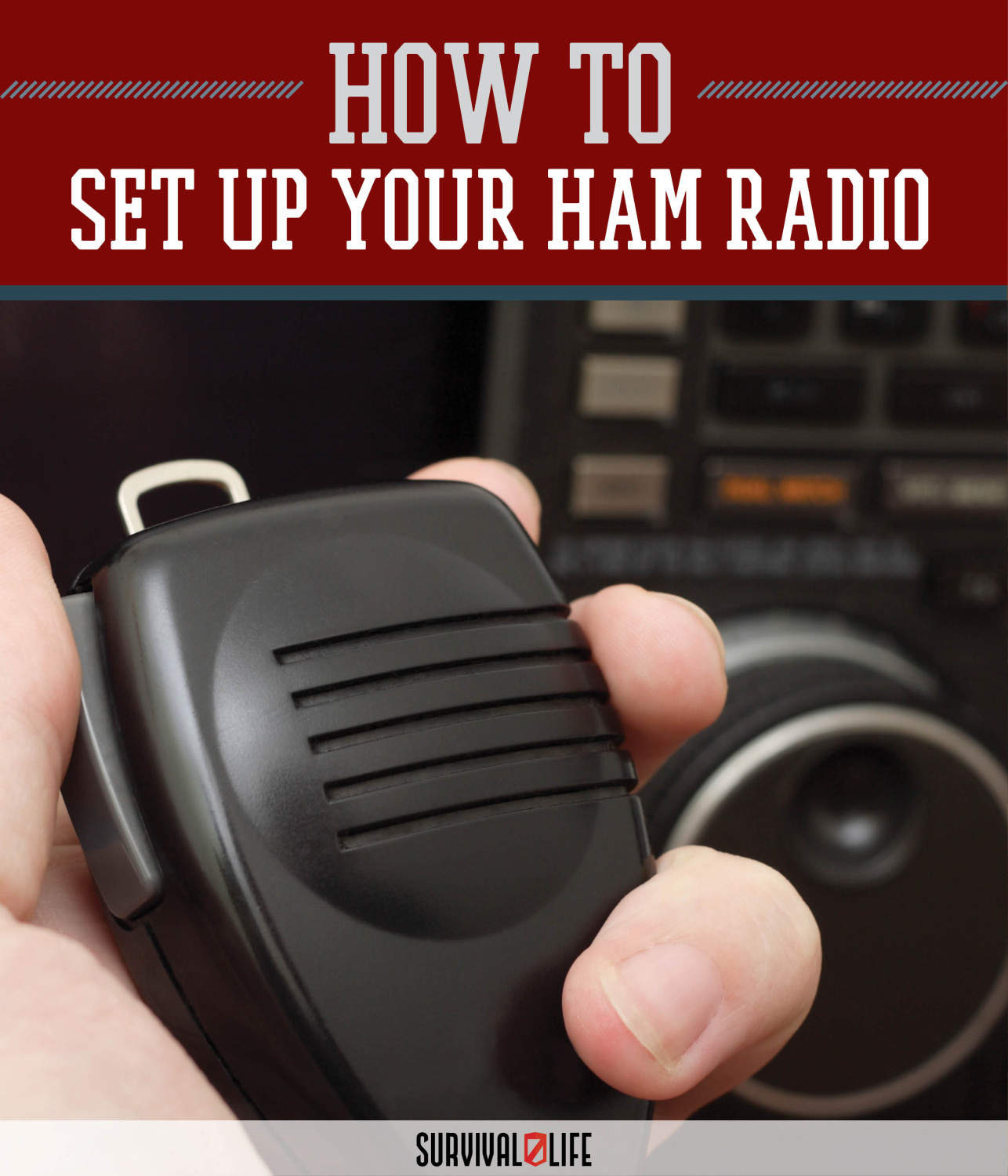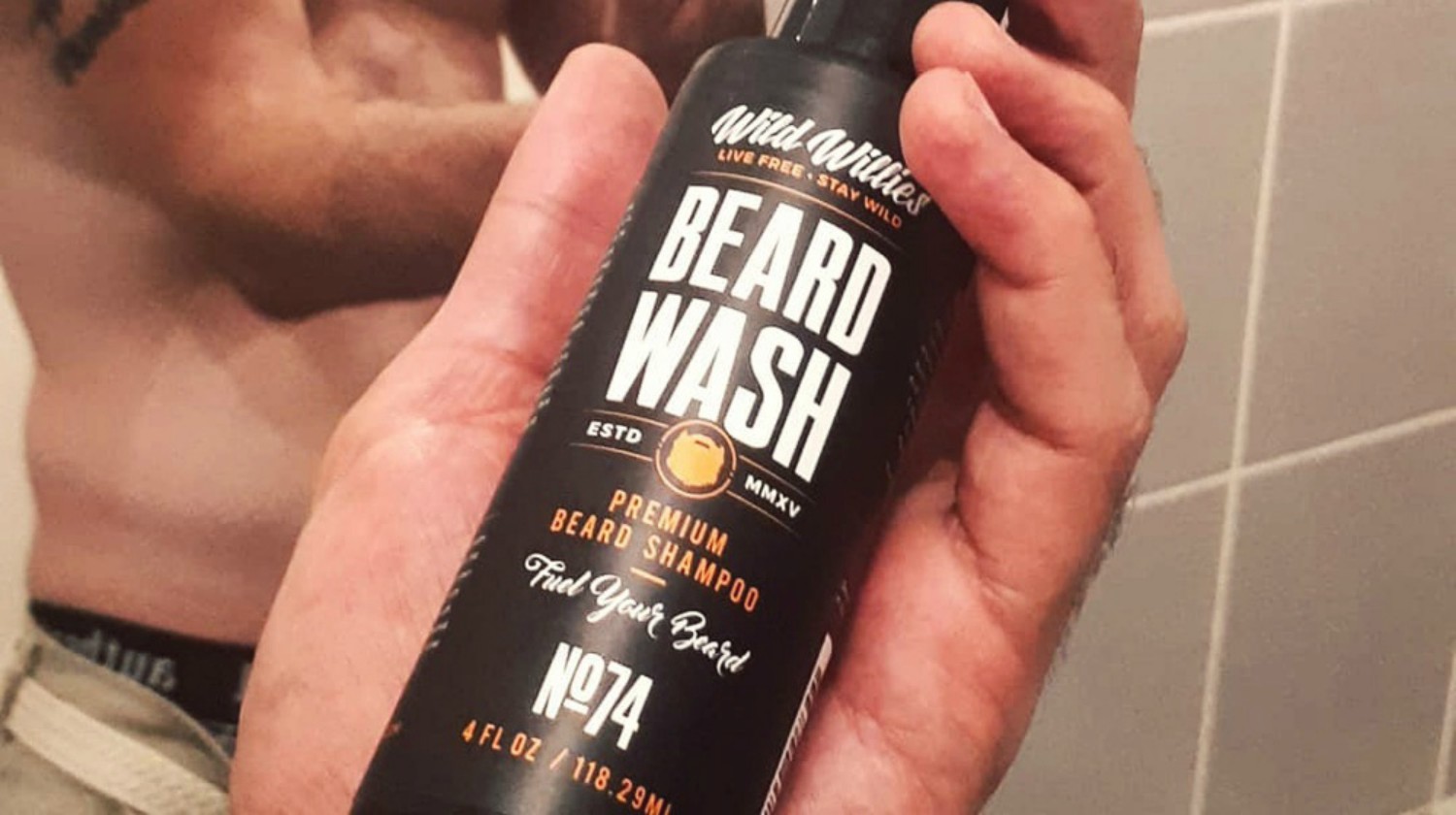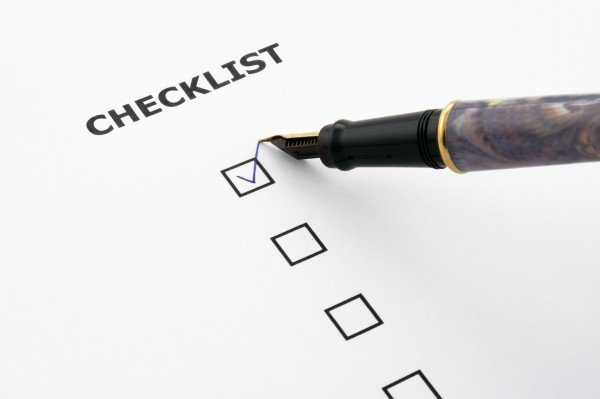Archives
An Easy Way to Set Up Your HAM Radio

Ham Radio is one of the best ways to communicate when you’re off the grid. Whether you’re a hobbyist or you’re using our ham radio in a SHTF situation because modern communication no longer works, it’s important to know how to set up your ham radio quickly and effectively. Gaye Levy at Backdoor Survival has some great ham radio tips. Check out her article below, and be sure to visit her site for more awesome homesteading and survival tips.
For the new ham radio enthusiast, setting up the gear can be a challenge. This is especially true for starter radios that are known to be high on features and design but low on intuitive usability. Documentation? Unless you can read broken English written by a Chinese national who has never studied the language, you are out of luck.
Like many preppers, I understand the importance of communication following a disruptive event. To that end, I took the easy road and purchased a couple of portable Baofeng radios so that I could communicate with the rest of the world when the grid is down.
Long story short, I spent six frustrating hours attempting to set up my radios for listening mode. I did not have a license, so “transmit” mode was not at option at that point. After failing to get much farther than loading some weather channels, I gave up and did what many of you have done. I set my radios in a box and hid them in the garage so I would not feel guilty about not learning to use them.
Mistake #1. Get the technician class amateur radio license before attempting to understand your physical ham radio device. With my tech license exam coming up in just a few days, you can bet that I now know a whole lot more than I knew months ago when I purchased the radios.
Mistake #2. Not enlisting a friendly “Elmer” to show me the ropes. (An Elmer is a person who teaches, mentors, and nurtures the newbie ham radio operator.) The crazy thing is that my BFF, George Ure has been a ham for as long as I have known him – over 40 years! He would become the perfect Elmer.
A couple of months ago I sent my two Baofengs plus some accessories (a programming cable, antenna, and external mike) to George’s Uretopia Ranch down in Texas. Since then, George has kindly set up my radios, plus he has written a tutorial on getting them so you can get yours set up too. What a guy!!
Note: This is Part 2 of How to Set Up a Ham Radio Without Going Crazy. If you missed part 1, your can read it here.
Up a New 2-Meter Ham Radio, Part 2
In our last get-together, we looked at setting up a ham radio just like you’d prepare a nine course meal.
A “course” in a fancy-schmantzy dinner has one or more “recipes” to it. So we:
(1) got the radios and accessories,
(2) figured out what we want them to do, and
(3) collected all the information needed to program the radio.
Today we’ll continue with putting the information we want into the radios using a programming cable and software.
You’ll next…
1. Have the radio, well charged. Nothing throws a wet blanket on festivities like putting the radio back on a charger because you didn’t charge it up first. D’oh!
2. Hook up the programming cable and driver. Install the driver FIRST! The driver is usually unique to the cable manufacturer and is determined by the chip installed in the USB cable. I tried to let Windows Update find something that would work, but that was a waste of time. Install the driver that comes with the cable. Make sure you have an available USB port you can access because we will be plugging the cable in shortly.
Note: The cable used for this set-up does not come with the radio. Not to worry. It is an inexpensive, $5 cable from Amazon.
While Baofeng – great radios in the under $50 class – do have their own software for programming available, I prefer to use a ham radio community project called CHIRP. You can download it free over here:http://chirp.danplanet.com/projects/chirp/wiki/Home
When you click on this link consider going down to the “daily builds” and hitting the “Click here”. Also, you will want to install CHIRP for whatever OS you have – Linux, Mac, and of course, the Windows 32 versions.
Now an explanation.
I used to prefer manufacturer software, but the ham community (as invariably happens) came up with a better idea. Why not set up a kind of standard, put it into a comma delimited file (.CSV) so if you have a great selection of channels on your Baofeng, you can simply email me the CHIRP image file, and I can load it into my Wouxun or my Kenwood FT-6F?
Hams are very big on cross platform interoperability! Furthermore, sometimes, you’ll find a ham club that has a decent selection of CHIRP files and that can save a lot of work.
Installing Some Test Frequencies
When you first open CHIRP you might get something of a start: There’s almost nothing to look at.

No worries – CHIRP is just waiting for you to tell it to do something. So when you click NEW under File, you’ll be treated to a blank pallet – just itching to be filled in with your favorite radio hang-outs.

Notice that the first frequency shown is 146.010000. You will be able to add all kinds of channels easily through a simple copy and past system.
To show you the process, let’s go ahead and toss all the weather channels onto the radio. You won’t have to do anything to get there – simply click on Files and drop down to Open Stock Config. All the weather channels will crop up as a new tab at the top of CHIRP – like so:

Now we will click on the NOAA Weather Tab and select the channels we want. Click NOAA1 and you’ll see it turns blue (meaning it’s selected).
Hold the CTRL key down and click all of them. It should look like this:

Now press CTRL: + C (control plus C copies all this onto your clipboard).
The last step to take is click back over to the Untitled file tab (in the new file we’re building) and click on the first unused line.
All it takes then is a CTRL+ V (to paste in the clipboard) and you’re done. It should look like this:

Last, but not least, we’re going to SAVE this sample file. Give it any name you want. Close that file and any others that are open.
Uploading the Data to the Radio
Now comes the fun part. We will plug in the serial programming cable into the empty USB port. If you got the driver installation right, you’ll hear the little “ready for use” dinger. Plug the cable into the radio and turn it on.
Now we go to the Radio menu item in CHIRP and select Download from Radio. As soon as you do this, the driver will challenge you about where the radio is located with a message like this:

Your COM port may vary, but it should show the radio name if the radio is turned on and your cable was firmly plugged in to the microphone/headset jack. Care to guess what 55-years in electronics whiz didn’t push his cable in hard enough?
Next, you will get this next challenging warning, but don’t fear this late in the game – go for it!
But be sure to click the checkmark to end this timewaster (lawyers have to make a living, too).

Next you’ll see a checklist of things you should already have done, if you’ve been following along closely.
Open the file you just saved with the weather channels on it, highlight the channels we want to move (I moved all of them) and paste them into the tab called Baofeng UV-5R (Untitled)*.
One last trip to the Radio menu on CHIRP and click UPLOAD to upload everything to your radio. During read and writing on the radio, a little green light under the red VFO button will blink.
Is this cool, or what?
Genius, Gomers and Gotchas
The Lazy Man’s Chirp List
On the Genius side, go sign up for a FREE account at www.repeaterbook.com as soon as you get a ham ticket.
Here’s why: They have a very solid repeater list of almost everything that you’d be interested in working (talking on) as a newly minted ham. They also provide for direct downloads of CHIRP files. So to load up Gaye (and Survival Hubby’s) radios, I simply downloaded all of Washington State’s frequencies for the bands I wanted.
Popped open in Excel, it took about 20-minutes to build a perfect list for Gaye for both 2-Meters and the 440 band.
Don’t Load DV Repeaters
You will see that most repeaters are FM but a few are marked DV. DV repeaters are supported on some radios – it means digital voice. The Baofeng is not the high-end radios, so delete these from your list.
Use Logical Names
The Baofeng radios (and almost all other newer ones) provide for three modes of operation.
1) VFO [variable frequency oscillator] settings is where you put in the receive frequency and then declare the transmitter offset. It’s usually plus 600 KHz or minus 600 KHz.
2) When you have set up a frequency pair for a repeater (don’t forget to set the right PL Tones!) you will then save it to a memory number.
3) When a frequency is shoved into a memory number, it can also have a logical name.
So with Gaye and S.H.’s radios, the first two channels are simplex (no repeater needed) so they can talk back and forth around the neighborhood. “Honey, pick up a quart of milk…”
As programmed, their CHIRP file looks like this at the top:

So when they turn on the radios, the display will look like this:

By the way, that red button is the VFO/Memory Recall button. The radio is set to display names.
Use the up and down arrows to select which repeater you want.
A Word about FM Stations
CHIRP isn’t perfect – just really good. For example, when I tried to put in some local FM radio stations, even though the radio specs say it should work, CHIRP declares it out of the radio’s range.
Too bad…but I’m sure someone has squawked it for another build to come. Remember: Daily builds, eh?
Freshly Programmed and Ready to Go for Gaye
In the meantime, as our newly minted hams get their licenses, they will not only have freshly programmed radios with good selection of local 2-Meter and 440 ham radio repeaters, but they will also have all the NOAA weather channels, all the GMRS, FRS, and even a few local cops and police agencies. Oh, and did I mention the Vessel Traffic System for boats at both ends of Puget Sound and….
Once you get the hang of programming with CHIRP into one of these little low cost radios, you can build up image files for anywhere you want to go. Business or pleasure taking you somewhere new? Channels for Orlando, Phoenix, or NYC all work out exactly the same. And once you build the image file for what you want, reloading a radio is nothing more than a 3-minute upload process to complete.
Almost like having a different radio for every city you plan to visit! Next time we go up to visit friends of ours in Oklahoma, I will junk the image off my Wouxun and pipe in the new image for Oklahoma…simple as that.
Testing the Radios
We wrap up our coaching session with a couple of final “how to get started” notes.
First, you’ll want to test the radios and see how they work. This is why I always like to have pairs of radios to program…makes testing a piece of cake. And since the program upload is the same, they should always operate the same.
To begin with, I would put both radios on 146.52 – the National 2-Meter Simplex Calling frequency. If nothing is heard, I’d transmit briefly – and listen on the other radio. Even with small “rubber ducky” antennas, several miles minimum – LINE OF SIGHT – is what to expect.
To get more distance, add a better antenna.
Antennas – Just the Bare Basics
The ideal length for any antenna may be calculated by simply dividing the desired frequency into 234.
Since we know from the study of the ham radio materials, that a typical 2-meter frequency is 147 MHz, we can figure that the right antenna length would be 1.592 feet.
We’ll set aside the 1 foot (because we know that’s 12-inches) and multiply another 12 inches time 0.592 which pencils out to 7.1 inches. Don’t forget we need to tack our first 12-inches back on, so it comes out to be that a perfect one quarter wavelength antenna would be about 19.1 inches.
Rubber ducky antennas are always a compromise in design. The shorter they are, the more convenience is implied. But, on 2-Meters, they are quite a compromise. Less so on the 440-band.
In ham radio, the longer the antenna, the more efficient it can become, but there’s always an asterisk in ham radio. The problem with super long antennas is they become more directional. There are some sweet spots. Probably the best simple antenna over a quarter wavelength would be the 5/8ths wave.
This 2-Meter antenna would be about 47 ¾-inches long. When mounted vertically, it would radiate about 3 decibels better than a quarter wave antenna.
If you live out in the boonies, there’s nothing like a serious 2-Meter mobile radio. I have a 50-watt radio and a ¼ wave antenna mounted on my old pickup truck and we can talk upwards of 40-miles on that set up. I’d be able to kick it up even more with a 5/8ths wave antenna but we don’t spend that much time off the ranch.
The next better antenna is something called a colinear. It’s a mish-mash of engineering terms that would make your ears bleed, but the antenna is a combination of curled wires that forms a vertically phased array that has tremendous gain.
If Gaye can’t get out well enough with the rubber ducky antenna that comes stock with the Baofeng, (or the upgraded longer rubber duck she purchased), then it would be time to brace for a zoning fight and go for a serious antenna. Something like the Diamond Antennas X-510HDM carried by Amateur Electronic Supply.
A little smaller than this 17-foot megalithic powerhouse is the Diamond X50A which will get some solid gain, isn’t portable, but is almost a hundred bucks cheaper. This one you can get via Amazon from Gigaparts.
Your Work Plan Going Forward
The trained operator part, well, I could wax on for hours about that.
But the best way to get experience is to actually get on the air, talk to people, go to club meetings, participate in Field Day – sponsored by the American Radio Relay League (www.arrl.org) in June every year. Details about this year’s events are over here.
Then you could sign up to become active in your state RACES organization, and there’s always a club volunteering to provide communications for big projects like street fairs, and the like.
The starting point is the testing of the radio to see what repeaters it can hit along your typical daily wanderings or commute.
With a simple to follow approach adding and deleting frequencies in CHIRP, in hardly no time you will have a perfectly adapted radio for your travel and use habits.
Close your radio into the spousal unit and first thing you know, you’ll have free family communications without a monthly bill, although I think we contribute $50-bucks a year to our local ham club. Beats the heck out of paying huge monthly cell bills and, as an added bonus, the wee ones might actually learn a thing or two along the way.
The Final Word
I am so very grateful that George, my personal Elmer, has set up my two Baofeng radios so that Shelly and I can hit the air waves running when we get our licenses. I am even more grateful for his willingness to share the various steps involved so that everyone who has a ham radio festering in the closet and get it set up and running.
Even if you are not licensed, you can still listen to radio transmissions without a license. Better yet, initiate steps to get a license.
For study materials, I am using Dan Romanchik’s free study guide The No-Nonsense, Technician Class License Study Guide. In addition, I am taking practice exams at www.AA9PW.com as on my iPad using this free Ham Radio app: https://itunes.apple.com/us/app/ham-radio-examtech/id601991935?mt=8.
Whatever tools you use, please do get started. After attending my first local ARRL club meeting, I can assure you other friendly and like-minded folks that be there to help you become an expert at emergency communications using Amateur Radio.
Next up? How to Set Up a Ham Radio Part 2.
Learn more with these related articles on our site:
How to Extend the Range on a Mobile Handheld Radio
Enjoy your next adventure through common sense and thoughtful preparation!
Gaye
-

 Do It Yourself7 months ago
Do It Yourself7 months agoParacord Projects | 36 Cool Paracord Ideas For Your Paracord Survival Projects
-

 Do It Yourself9 months ago
Do It Yourself9 months agoHow To Make Paracord Survival Bracelets | DIY Survival Prepping
-

 Do It Yourself9 months ago
Do It Yourself9 months ago21 Home Remedies For Toothache Pain Relief
-

 Do It Yourself10 months ago
Do It Yourself10 months agoSurvival DIY: How To Melt Aluminum Cans For Casting
-

 Exports8 months ago
Exports8 months agoAre Switchblades Legal? Knife Laws By State








Pingback: An Easy Way to Set Up Your HAM Radio » Survival Gear & Food Storage
Pingback: Survival Kits for Rural or Urban Environments | Survival Life
Pingback: Best Ham Radio | Top Choices To Amateur Radios You Can Use - Primal Survival
Pingback: Best Ham Radio | Top Choices To Amateur Radios You Can Use – Sprent Brass
Pingback: Best Ham Radio | Top Choices To Amateur Radios You Can Use – SurvivalHood
Pingback: Best Ham Radio | Top Choices To Amateur Radios You Can Use - Cooking in Quarantine
Pingback: Best Ham Radio | Top Choices To Amateur Radios You Can Use – Bulletproof Survivors
Pingback: Tactical Skills Every Suburbanite Should Know And Practice - survival updates
Pingback: Valentines Gifts for Him: The Best 10 Gifts for Survivalists and Doomsday Preppers – Sprent Brass